QuestionQUESTION: Hi there, i purchased my first marine tank a year and a half ago (24G Nano Cube) its been a great little tank for the corals, pulsing xenia, zooanthids, red mushrooms and a toadstool leather coral. I upgraded to a 34G tank, thats been set up for about 7 months now, and the liverock i got from my local fish store had glass anemones. I bought two new leathers a finger and a spaghetti, then glass anemones started to grow next to my toadstool and the finger. I tried to frag the finger one, thats successful so far, just waiting for it to stick but the toadstool is gone. it shrunk big time, i think because of the anemones, so i moved it upstairs to see if it would perk up, it was fine for a few days then it practically disintegrated. iv sorted the anemone problem by getting a small copperband butterflyfish, excellent fish! Hard to get it to eat though!! Any ideas to what caused the toadstool to ''melt'' i think stress but i may be wrong?
many thanks!
ANSWER: Hi Paul. Toadstool corals do not tolerate very well the stinging from any anemone or other coral. Sometimes all it takes is a few stings to stress the coral out to the point that it doesn't open up anymore. Toadstools also hate to be moved around or handled in any way. When stung by an anemone you will see a very obvious area of decay. It will usually look cheesy or appear very pale compared to the rest of the coral. This area should be cut off as soon as it is seen. Sometimes the decay can spread out over the entire coral rather quickly. I have found that a quick dip in a lugol's solution will help repair any damaged spots on the leather corals and bring it back quickly. I too have had a similar incident happen with a finger leather getting stung by my BTA. I moved it slightly away from the anemone but it started to turn to mush the very next day due to the stings it suffered from the anemone. I don't think there is anything wrong with your tank nor do I think you did any thing wrong. The toadstool was in the wrong place at the wrong time and suffered from the sting. Then it was probably stressed by the move on top of the sting and that is what did it in. It was a combination of the two factors. One word of wisdom that I have learned the hard way over the years is that leather corals do not do well in a smaller tank that houses any stony corals. The chemical warfare is more than they can handle so if you have any stony corals in your other tank that may have exasperated the problem. Never keep leathers and stoney together in a smaller reef tank.
---------- FOLLOW-UP ----------
QUESTION: Hello again my Copperband butterfly has basically eaten every anemone, the thing is he is not interested in the brine shrimp i feed the rest, i have a regal tang, false gramma and a common clownfish. Before i bought him i did the research, if they eat live corals, they probably wont eat the food that the hobbyist puts in. The guy at my LFS said the fish would eat Mysis Shrimp, havent tried this yet. And also do you have any knowledge on overtank illuminaires? I want to buy one as i think this will help in eliminating the water evaporation. The tank i have got has no extractor fans meaning quick salt build up in the water, and more money being spent on water conditioner products, its a pain. Would the illuminaire help?
AnswerHello again Paul. All butterfly fish can be very difficult to get to eat. While they may do a good job at ridding your tank of aptasia anemones the ones that do so are also usually not interested in the food you generally feed your fish. Butterflies that do eat well prepared foods will usually not help too much in ridding a tank of a pesky anemone problem. The trick is to try different food sources until you find one he may like. If you are currently feeding frozen brine shrimp try live a few times.(I don't recommend feeding live brine shrimp long term due to the fact that it has very little nutritional value but it is the best food for getting a finicky eater to eat in a tank environment) Sometimes simply introducing a butterfly to a live food source can get them eating in your tank and switching them over to frozen becomes a little easier. Remember these fish are taken directly out of the ocean and basically starved until they reach your tank. They must be taught how to eat what is fed. This is made simpler by feeding live at first. If live brine shrimp is not taken it may prove to be a very difficult task to get the butterfly to eat and you will need to try many different types of foods until you find one that it will accept. Typically mysis shrimp, lobster eggs, sponge-based foods and small pieces of squid are a good place to start. This is one of reasons these fish are considered more difficult to keep.
Over tank illuminaries are simply a kind of lighting that is put up on braces and keeps the light raised above the tank. These lights help in keeping the heat of the water at the surface down by allowing the air to circulate between the water's surface and the light itself. While they will help somewhat with evaporation caused by the surface being heated up by the light source, they will need to be used over an open top tank for best light penetration into the water so you will still get a good amount of evaporation. All tanks lose water throughout the course of a day. Some do so more than others and if the temperature of the tank and of the environment is high it will evaporate more. You may want to look into getting an automatic top off reservoir. These will hold your already conditioned water and have a float hooked up either inside your tank or better yet inside a sump or refugium. As the water level drops so does the float which when dropped down to a certain point will turn on a pump to the reservoir and pump the water back into the system until the float is once again at the appropriate level and shuts off the pump. All you have to do is make sure your reservoir is kept full. I have one of these on one of my tanks and it never fails. My water level never goes down enough to cause my salinity to rise to a dangerous level and I am able to keep my salinity closer to natural seawater because of this.

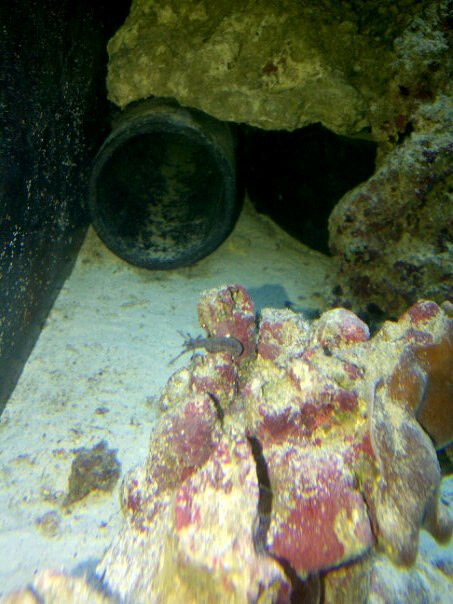 what type of worm good or bad?
Question
worm
We found a clear worm like creatur
what type of worm good or bad?
Question
worm
We found a clear worm like creatur
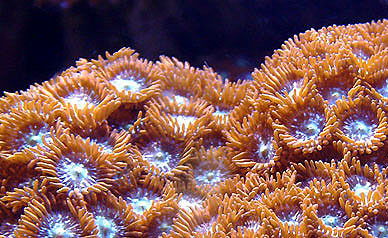 Adding a Falco
QuestionHi this is dave
I was thinking about adding a
Adding a Falco
QuestionHi this is dave
I was thinking about adding a
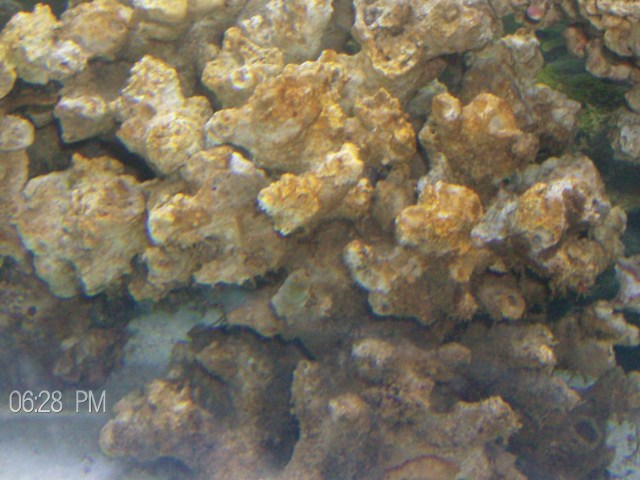 rock changing colors in saltwater aquarium
Questionyellow rocks
QUESTION: I started a 55 ta
rock changing colors in saltwater aquarium
Questionyellow rocks
QUESTION: I started a 55 ta
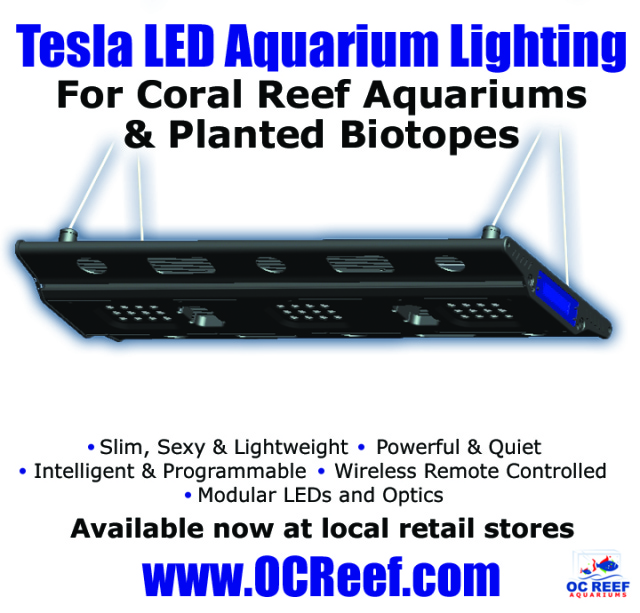 what type of light should i use
QuestionI have a problem i need help with. I have
what type of light should i use
QuestionI have a problem i need help with. I have
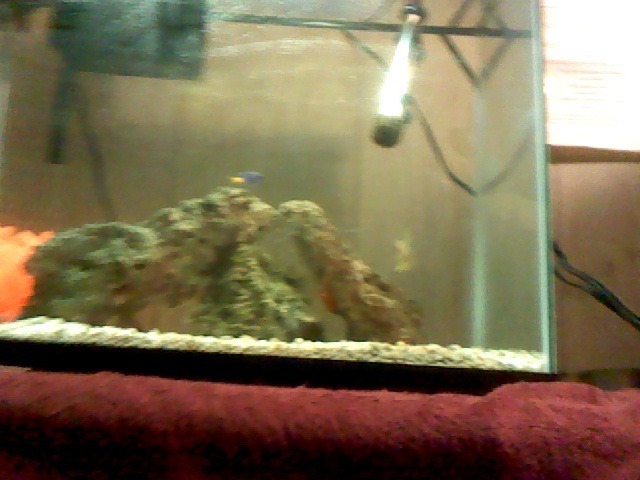 14 gallon tank
Questionmy tank
QUESTION: hello I have 2 questio
14 gallon tank
Questionmy tank
QUESTION: hello I have 2 questio